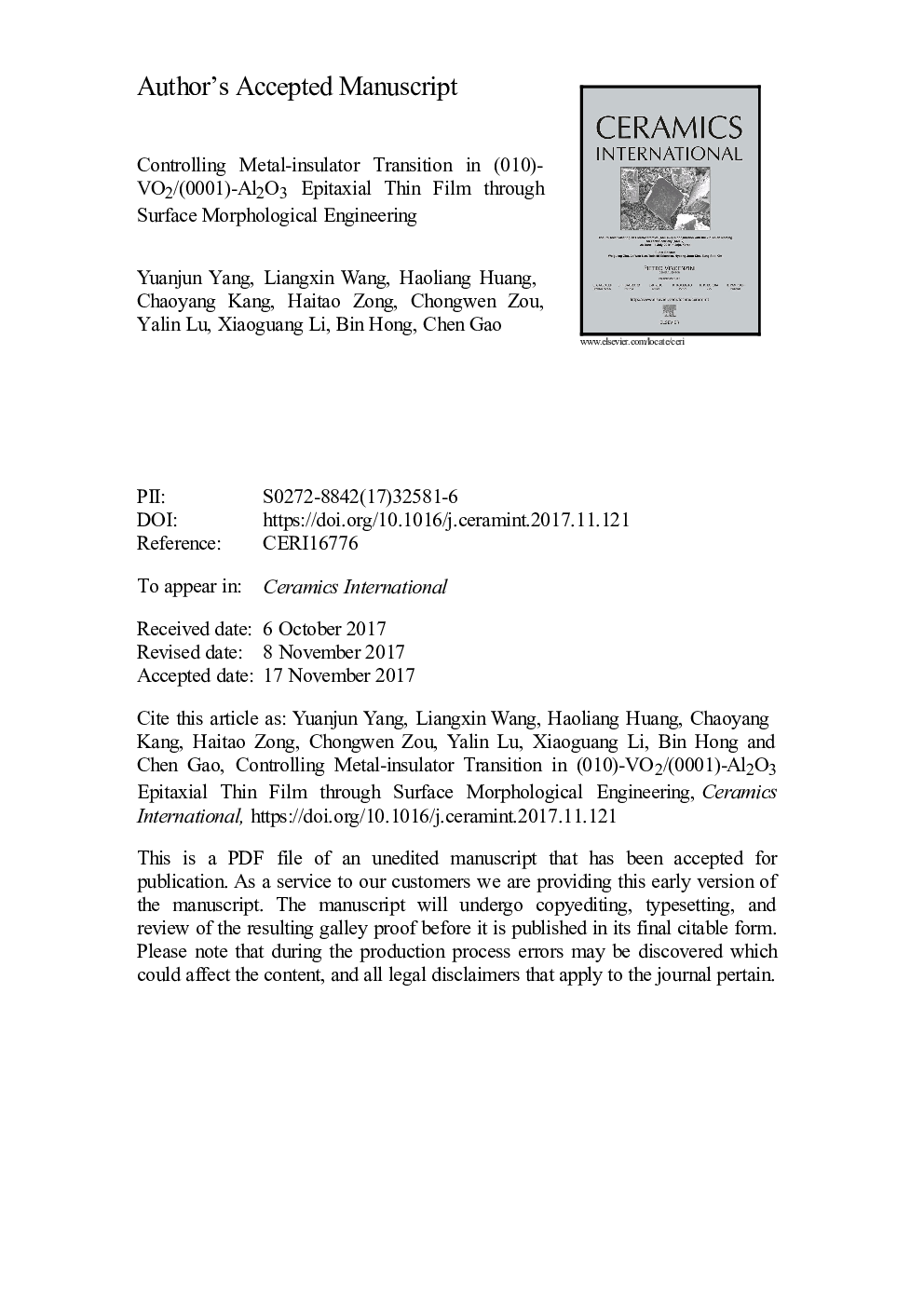| Article ID | Journal | Published Year | Pages | File Type |
|---|---|---|---|---|
| 7889083 | Ceramics International | 2018 | 30 Pages |
Abstract
Surface morphological control of the metal-insulator transition behaviors of VO2 epitaxial thin films is achieved by annealing substrates of (0001)-Al2O3 single crystals. The well-defined terraces of the (0001)-Al2O3 substrates are formed by annealing in air at 1200 °C. Correspondingly, the surface roughness dramatically decreases in the VO2 epitaxial thin films on the annealed substrates, compared with that on the unannealed substrates. The order of magnitude of the resistivity change ratio (~ 102) of annealed samples across the metal-insulator transition (MIT) decreases by a factor of one, compared with that (~ 103) in unannealed samples. This result is ascribed to grain size effect in the VO2 epitaxial thin films. Moreover, the MIT temperature is reduced in the annealed samples with various thickness, compared with the unannealed ones. A reduction of 14.4 K of the MIT temperature is observed in the thinnest VO2 films on the annealed substrates, compared with the unannealed samples. This behavior results from a compressive strain along the V-V atom chains in the annealed samples, which modifies the orbital occupancy of the V4+ ions. While increasing the film thickness, the MIT change ratio keeps on the order of magnitude 102, and the MIT temperatures of the VO2 films on the annealed substrates becomes closer and closer to those of the unannealed samples due to the weakened substrate effect. This work suggests a promising approach to decrease the MIT temperature and still maintain a moderate change ratio for the MIT, potentially enabling room-temperature electronic devices based on VO2 thin films.
Related Topics
Physical Sciences and Engineering
Materials Science
Ceramics and Composites
Authors
Yuanjun Yang, Liangxin Wang, Haoliang Huang, Chaoyang Kang, Haitao Zong, Chongwen Zou, Yalin Lu, Xiaoguang Li, Bin Hong, Chen Gao,
